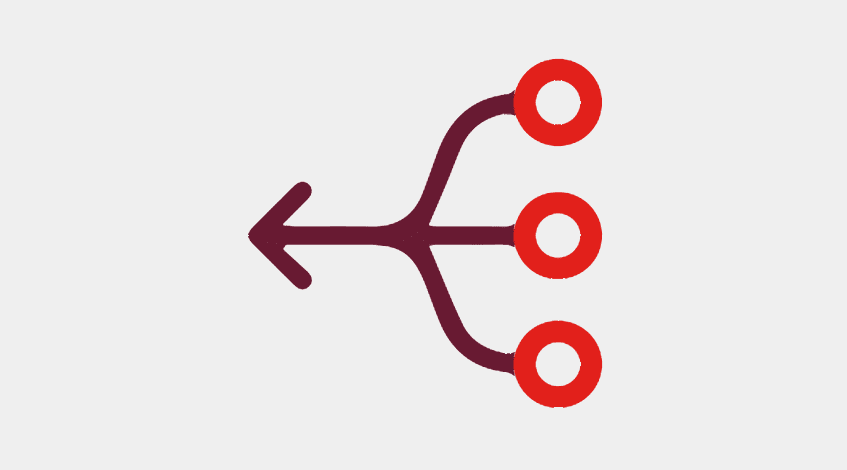Zero Trust Network Access (ZTNA) represents a modern, comprehensive approach to cybersecurity. In essence, it operationalizes the principle of ‘never trust, always verify’, making no default assumptions about the trustworthiness of connections, whether they originate inside or outside the network perimeters. ZTNA policies require continuous verification of all users and devices, establishing access on a strictly need-to-know and minimal privilege basis. This approach is designed to restrict lateral movement within a network, minimizing the threat of unauthorized access and breaches.
Contrary to traditional security measures that may allow broad access once someone is verified, ZTNA assumes a potential risk in every access request. This adaptive security posture can dynamically adjust privileges and is not reliant on a static perimeter, reflecting a fundamental shift from assumptions of trust towards ongoing verification.
The Evolution of Cybersecurity
Cybersecurity tactics have historically leaned on the castle-and-moat analogy, where defenses concentrated on fortifying the perimeter to keep threats at bay. Once inside, users and devices were generally trusted. However, as cyber threats have become more sophisticated, this perimeter-based approach has shown its limitations. Attackers breaching the perimeter could move laterally with relative ease, compromising sensitive data undetected.
With a clear shift towards granular security controls, ZTNA presents a solution that attends to the modern complexities of cyber-threats. It enables secure remote access to applications and services by treating every access attempt as a potential threat, thus eliminating implicit trust. The increasing prevalence of cloud services, along with the complexity and agility of hybrid networks, has fueled the rise of ZTNA solutions as a more robust cybersecurity stance.
The need for ZTNA has been further underscored by compliance requirements and data breach regulations. Businesses cannot afford the costs associated with a compromised network, which includes, beyond financial penalties, damage to reputation and customer trust. Thus, the move towards more dynamic and context-based security protocols is seen as not just an upgrade, but a necessity.
Understanding the ‘Never Trust, Always Verify’ Ethos
Delving into the Zero Trust philosophy reveals a strategic framework that extends beyond technology—it requires a cultural shift within an organization. The ethos hinges on continuous verification, where trust levels are dynamically adjusted based on user behavior, data sensitivity, and device security posture. This systematic skepticism towards access requests is becoming the hallmark of secure operations.
In tangible terms, for daily business operations, this means implementing robust identity verification methods, deploying micro-segmentation strategies, and consistently logging and analyzing access patterns. Companies in the St. Louis area and beyond need to recognize that security is not a one-time event but an ongoing process that must be woven into the very fabric of their operational strategies.
Furthermore, the proliferation of remote work and Bring Your Own Device (BYOD) policies has further dissolved the traditional network perimeter. These trends underscore the necessity for security solutions like ZTNA that can handle complex environments where users connect from various locations and devices. With the St. Louis business community’s growing reliance on diverse work arrangements, the adoption of a Zero Trust approach is not just prudent but critical for maintaining integrity and resilience against cyber threats.
It is within this context that companies like Essential Network Technologies advocate for the adoption of Zero Trust principles, recognizing that in the rapidly changing digital landscape, security cannot be static. Adopting ZTNA can help safeguard the technology infrastructure critical to finance, healthcare, education, and government sectors, ensuring that St. Louis organizations can continue to operate with confidence in their cybersecurity measures.
ZTNA in Action: Real-World Applications
The experience of numerous organizations across industries stands as a testament to the strengths of Zero Trust Network Access (ZTNA). A notable case is that of a global financial institution that, upon adopting ZTNA, was able to secure its network against a landscape of sophisticated threats and ensure continuous compliance with stringent regulations. By providing secure remote access only when necessary and confirming identity at each step, the financial sector has witnessed a notable reduction in successful cyber-attacks.
Similarly, healthcare providers have leveraged ZTNA to protect patient data, ensuring that only authorized personnel can access sensitive information and thus maintaining both privacy and compliance with regulations like HIPAA. Real-world effectiveness of ZTNA illustrates the strategic advantage it offers businesses in safeguarding their assets.
Barriers to Implementing Zero Trust
Despite its proven advantages, numerous organizations encounter obstacles when transitioning to a Zero Trust model. Common misconceptions such as the belief that ZTNA is too complex or costly deter adoption. Furthermore, some businesses struggle with the cultural shift required for Zero Trust—moving away from an environment of inherent trust to one of constant verification.
Addressing these concerns necessitates clear communication on the functionality and cost-effectiveness of ZTNA in the long term, as well as comprehensive training to align the company culture with security best practices.
The Future of Zero Trust and Network Security
Zero Trust is poised to become a cornerstone of cybersecurity strategy. As organizations increasingly transition to cloud computing and the Internet of Things (IoT) continues its expansion, ZTNA will become an indispensable tool in securing disparate and dynamic IT environments.
Industry experts have forecasted the rising adoption of ZTNA models, as they offer a more robust and adaptable framework to uphold security in an ever-evolving cyber landscape. Predictions for the future of Zero Trust affirm the necessity of integrating such future-ready measures.
Implementing Zero Trust in Various Sectors
While all sectors can benefit from the strengthened security ZTNA provides, each industry must tailor the Zero Trust principles to its specific needs. In finance, Zero Trust frameworks must accommodate high-volume transactions and stringent regulatory compliance, while in healthcare, patient data protection presents unique challenges. Educational institutions are tasked with securing a vast array of devices and user profiles, and government entities must adapt Zero Trust policies that ensure national and local security without compromising on service delivery to the public.
Essential Network Technologies’ Perspective on ZTNA
From Essential Network Technologies’ viewpoint, the specifics of implementing ZTNA lie in understanding the unique requirements of each client. For organizations in the St. Louis area, ZTNA is not just a cyber defense mechanism but a strategic component for ensuring longevity and trust in their operations.
Essential Network Technologies does not view ZTNA as a one-size-fits-all solution but rather an adaptable framework that must be customized to fit the technology infrastructure of individual sectors, from private high schools to municipalities and hospitals. By taking a detailed, client-centric approach to ZTNA, Essential Network Technologies provides a service that not only enhances security but also streamlines the operations and resilience of St. Louis’s diverse business landscape.
For those seeking to fortify their cyber defenses within the St. Louis area, Essential Network Technologies stands ready to implement a tailored Zero Trust Network Access strategy. Our experienced team will ensure your institution’s infrastructure is equipped to navigate the complexities of today’s cyber threats. Contact us to safeguard your operations and data with cutting-edge security solutions.



